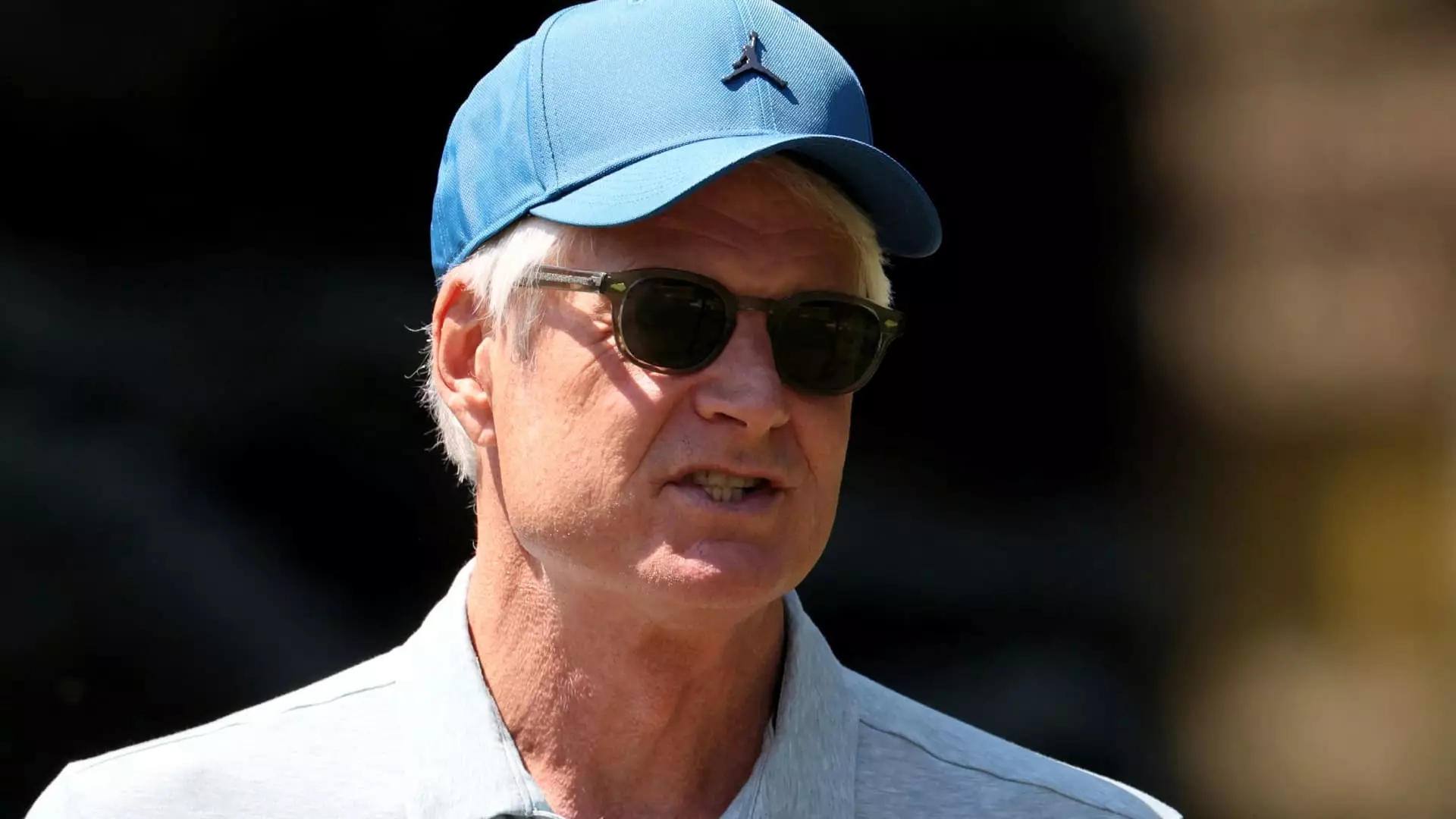On a noteworthy Thursday for the sneaker giant, Nike announced the departure of CEO John Donahoe, marking a significant shift in leadership as the company looks to navigate through turbulent waters. Donahoe, who has been at the helm since January 2020, will officially step down on October 13, with Elliott Hill, a seasoned Nike executive who recently retired, stepping back into a prominent role the very next day. The transition comes against a backdrop of disappointing financial results, prompting speculation and concern among investors about the company’s direction.
Shares of Nike saw a temporary surge of 8% in extended trading following the announcement, although this modest uptick is telling in the context of a rough year, with stock values plummeting over 25%. This drastic decline highlights the urgency behind Nike’s need for a leadership change and serves as an indicator of the company’s current market challenges.
Revisiting Past Expertise
Mark Parker, Nike’s executive chairman, expressed enthusiasm for Hill’s return, emphasizing his global expertise and familiarity with the brand. Hill’s previous experience, which spans over three decades at Nike, leads many to believe that he is well-equipped to rekindle the innovative spirit the company was previously known for. According to Parker, Hill’s “passion for sport” and comprehensive understanding of Nike’s operations make him an ideal candidate to guide the company through its next chapter of growth.
The backdrop to this leadership shakeup is a strategic reorganization at Nike that has led to significant shifts in its market approach. The company has been attempting to reposition itself by focusing on direct-to-consumer sales, hiring strategies, and adapting its product line. However, critics argue that this shift has been detrimental to Nike’s innovation pipeline and has stifled the creative churn that once characterized its sneaker releases.
Nike’s latest fiscal reports tell a troubling story, with a projected sales decline of 10% attributed to softening demand in key markets such as China. This drop was a stark contrast to earlier predictions, illustrating the disconnect between company projections and market realities. In fact, the company recently experienced its worst trading day ever, leading analysts to question the long-term viability of Donahoe’s strategic vision. While co-founder Phil Knight stood by Donahoe during these challenges, the recent executive switch suggests that even long-standing supporters recognize the urgent need for new strategies.
This shake-up coincides with a broader national trend in retail, where traditional giants are increasingly competing with emerging brands that prioritize innovative designs, strong marketing, and consumer engagement. As Nike continues its transition away from wholesale retail partners, new competitors are seizing opportunities that may have once belonged to the industry giant.
Despite the daunting challenges ahead, Elliott Hill is positioning himself as a unifying force for the company. His past tenure at Nike, which culminated in leading the consumer and marketplace division, positions him uniquely. Hill’s familiarity with Nike not only establishes trust among employees but also enables him to forge ahead with necessary changes. “Nike has always been a core part of who I am,” Hill stated, indicating his commitment to reinvigorating the brand and restoring its market prowess.
The challenge for Hill will be to rekindle the innovative spirit that once fueled the company’s success. As he reconnects with both longtime employees and new partners, the goal will be to deliver cutting-edge products that resonate with consumers’ evolving preferences. His leadership will not only entail addressing financial hurdles but also restoring morale within a workforce that has been stressed by uncertainties and rapid changes.
The Road Ahead
As Nike embarks on this new voyage under Hill’s leadership, key questions remain about whether the company can successfully adapt to its shifting landscape. The focus will shift back to innovation, exploring areas previously neglected in pursuit of direct-to-consumer strategies. Analysts are cautiously optimistic, suggesting that Hill’s strong grasp of Nike’s cultural dynamics could reinvigorate confidence both internally and externally.
While the change at the top signifies significant moments of introspection for Nike, there is a sigh of relief among stakeholders who recognize the potential Hill has to refocus the brand. The path won’t be easy, as he will need to tackle both internal and external pressures, but Hill’s deep-rooted knowledge of Nike’s ethos and market dynamics might just provide the necessary fuel for its resurgence in the fiercely competitive athletic wear industry.


Leave a Reply